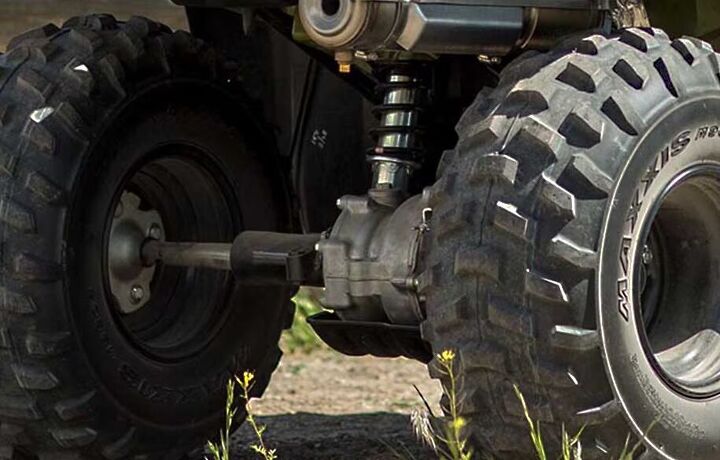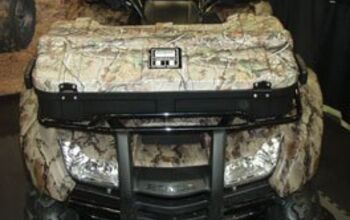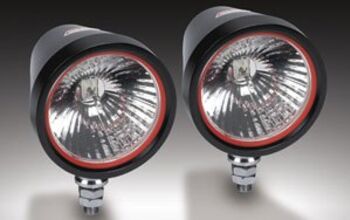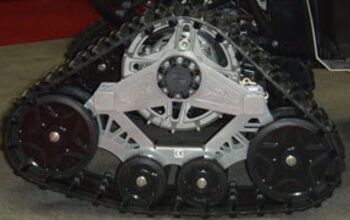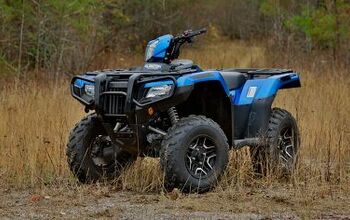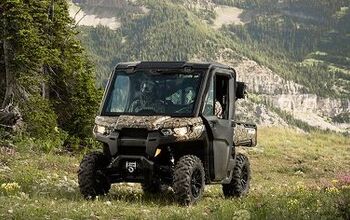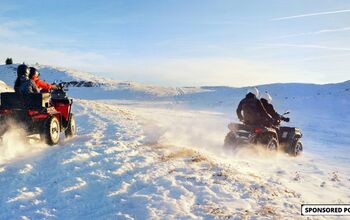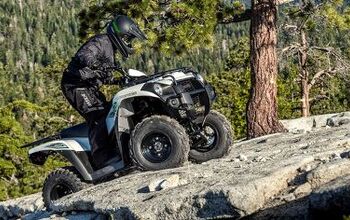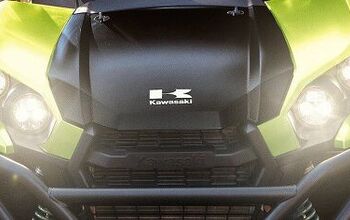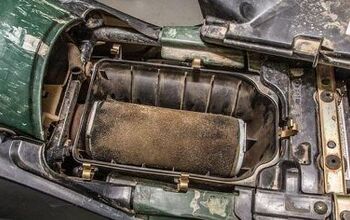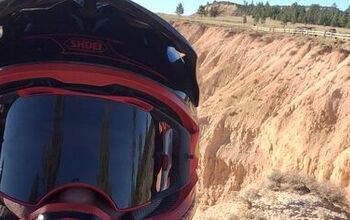Comparing Independent Rear Suspension (IRS) and Solid Rear Axle (SRA)

The debate between independent rear suspension (IRS) and solid rear axles (SRA) is one of high contention among off-roading enthusiasts. It goes even further in the full-size scene, with great controversy over independent front suspension (IFS) versus solid front axle (SFA), but in the all-terrain-vehicle (ATV) world the debate is limited to how the tires put the power down at the back end of the machine. Each system has its merits and drawbacks, impacting the ATV's performance, handling, and versatility. Which is best?
Solid rear axles have been a longstanding traditional design in ATVs, and in vehicles and automobiles on the grander scale as well. They offer simplicity, durability, and cost-effectiveness. A solid rear axle connects both rear wheels, ensuring they move in unison. This design excels in rugged terrains, providing excellent traction and stability due to both wheels being firmly planted on the ground simultaneously. The solid axle also allows for easier maintenance since it involves fewer moving parts compared to independent systems. In general, off-camber situations suit SRA setups well as the center of gravity (COG) is kept low by the axle, making it easier to maintain traction and balance when side-hilling.
However, solid axles have limitations. One significant downside is their inferiority in providing a smooth ride over uneven terrain. When one wheel encounters an obstacle, the other wheel is affected, leading to a bumpy and less comfortable ride. In essence, each tire will do the opposite of what the other does, so if the right tire hits a rock and is pushed upward, the left tire is pushed downward. This can be jarring and cause breaks in traction as well. Generally with SRA systems, there is one shock and spring that dampens the impact between the axle and the rider. To an extent, the tires are left to do their own bidding when it comes to impact absorption.
Independent Rear Suspension (IRS) systems revolutionized ATV design by offering each rear wheel independent movement. This setup consists of separate suspension for each wheel, allowing each to react independently to the terrain. Setups consist of a dedicated spring and shock for each corner. This translates to a smoother ride, as one wheel's movement doesn't affect the other, reducing the transfer of shock and vibration to the rider.
The primary advantage of IRS lies in its superior comfort, especially on rough, uneven surfaces. It enhances traction by allowing each wheel to maintain contact with the ground more consistently, improving stability and maneuverability. IRS-equipped ATVs typically provide better traction and grip, enabling them to navigate tricky terrains with less difficulty.
However, IRS systems are more complex and often costlier to manufacture and maintain compared to solid axles. The increased number of moving parts and components in an IRS setup can make maintenance more involved and potentially more expensive. IRS systems can also falter when side-hilling, as the higher COG than an SRA setup leads to a higher likelihood of tipping over.
On the front of performance and handling, it’s a toss-up as to which is better. IRS-equipped ATVs generally outperform those with solid axles in terms of handling and comfort. The independent movement of each wheel in IRS systems allows for better traction, stability, and overall performance on various terrains. However, SRA systems can be set up and tuned to perform quite well in certain situations. Remember that sport quads generally employ SRA setups, and it works much better for dedicated track use as well.
While solid axles excel in extreme terrains due to their ruggedness and simplicity, IRS-equipped ATVs offer a more versatile riding experience. They handle both rough terrains and smoother trails more adeptly due to their improved handling characteristics. They also allow for more ground clearance, which is a huge benefit when navigating rocky, tree stump-ridden trails.
There are differences in maintenance and durability. Solid axles require less maintenance due to their simplicity. However, IRS systems, with their more intricate design, might demand more frequent maintenance and checks to ensure proper functionality. This can potentially increase the overall cost of ownership. Similarly, there are two shocks and springs for an IRS-equipped rig as opposed to one for an SRA vehicle. The repair/replacement costs correspond accordingly.
Initially, ATVs with solid axles tend to be more cost-effective than those with IRS. However, the price difference may be justified for riders seeking enhanced performance and comfort. Still, options do exist for those seeking a solid axle. Honda offers the FourTrax Recon might be one of the lone rangers here, but most smaller ATVs and youth models are still SRA to maximize stability and minimize price and complexity.
While there are in fact choices, the breadth has narrowed quite a bit in recent years. IRS has evolved as a superior experience for most users, and as such the SRA has diminished in popularity and availability. Once upon a time, Kawasaki offered a Brute Force 650 with either IRS or a SRA, but the latter was discontinued in favor of the independently sprung model (which has since also been killed off, leaving the Brute Force 750 as the top-dog Kawi, and yes, it has IRS). And while 2WD sport quads did undergo a brief period of manufacturers trying out IRS setups (in the Honda 700XX and Polaris Outlaw 525), they have stuck to solid axles despite almost no dedicated sport quads being on sale today.
In conclusion, the choice between independent rear suspension and solid rear axles in ATVs ultimately depends on the rider's preferences, intended use, and budget. While solid axles offer durability and simplicity, IRS systems provide superior handling and comfort. Riders focused on extreme terrains might favor solid axles, while those seeking versatility and improved performance across various conditions may opt for IRS-equipped ATVs, and frankly, that’s the right move these days with extreme exception, and the manufacturers are aligned in that thinking.

Ross hosts The Off the Road Again Podcast. He has been in the off-road world since he was a kid riding in the back of his dad’s YJ Wrangler. He works in marketing by day and in his free time contributes to Hooniverse, AutoGuide, and ATV.com, and in the past has contributed to UTV Driver, ATV Rider, and Everyday Driver. Ross drives a 2018 Lexus GX460 that is an ongoing build project featured on multiple websites and the podcast and spends his free time working on and riding ATVs.
More by Ross Ballot




